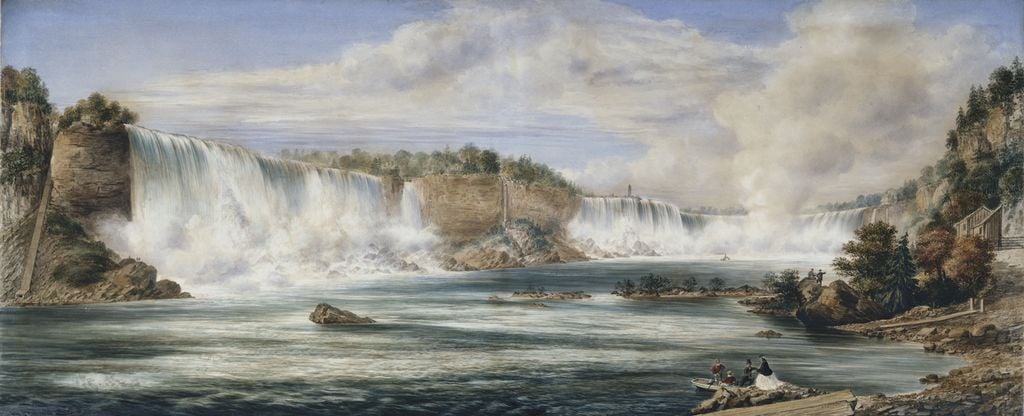
Canada
Explore The Royal Family's close relationship with the region, as well as the diverse artistic traditions represented in the Royal Collection
'The Great Confederation' - Modern Canada
Following the union of the Canadas, the British colonies in North America underwent rapid industrialisation as increased immigration from Europe was encouraged, and soon there was agitation for greater self-government. After exhaustive negotiations, in 1867, representatives from the provinces of Canada, Nova Scotia and New Brunswick, travelled to London to ask Queen Victoria’s permission to unite and form a new country, to be called ‘Canada’. The queen approved, noting in her journal on 22 February of meeting the delegates who had ‘come about the great confederation of British North America, which will be effected’. The Confederation of the provinces occurred on 1 July 1867, a day celebrated annually among Canadians as Canada Day.
In the 1850s, the town of Victoria on Vancouver Island on the Pacific Northwest coast of North America underwent a gold rush which led to a massive population boom and soon Queen Victoria received a request to help with the naming of the new colony. After rejecting several proposals, she suggested the name ‘British Columbia’ for the territory, which was quickly adopted. This new colony rapidly grew in importance, and following Confederation, the Canadian government soon sought the admission of British Columbia as a province in the new nation. This was achieved in 1871 on the condition that the provinces would be linked by a new railway, which would traverse the whole country. Railways brought new opportunities for Canada and the country rapidly expanded westwards, with new farms, ranches and towns being founded along the lines. However, this also brought settlers and Indigenous people into conflict with one another and resulted in the deaths and removal of thousands of people from their ancestral lands.
Canada still holds great affection for Queen Victoria and her role in forming the modern nation. The queen’s birthday (celebrated the last Monday before 25 May) remains a national holiday, serving as the Sovereign’s Official Birthday in Canada, with the Trooping the Colour being held in Ottawa and parades and celebrations occurring throughout the country.
The twentieth century saw Canada increasingly grow as an independent nation, all the while maintaining a very close relationship with Britain and the Royal Family. Canadians fought alongside British forces in the First World War and, in 1931, Canada was recognised as an independent country, equal to the United Kingdom, by the Statute of Westminster. Following the Second World War, in which Canadians again fought alongside Britain, Canada became a founding member of the United Nations and NATO.
In 1967, Canadians celebrated the centenary of Confederation with Her Majesty The Queen visiting Canada and presiding over the cutting of a giant birthday cake outside the Parliament Building in Ottawa. That year, The Queen also introduced the Order of Canada to celebrate and honour the remarkable achievements of Canadians from all walks of life.
In 1982, The Queen was present in Ottawa to give Royal Assent to the patriation of the Canadian constitution which finally allowed the Canadian Parliament to amend the constitution without the approval of the Parliament in Westminster. The Queen noted that it was one of the ‘quirks of history’ that it had taken so long and that she looked forward to celebrating the future of ‘this magnificent nation’. Since then, Canada has continued to flourish and in 2017, Canadians marked 150 years since Confederation with a year of celebrations both in Canada and overseas. Several of these events were attended by members of the Royal Family, including The Prince of Wales, who undertook an extensive tour of the country, and The Queen, who made a special visit to Canada House in London to meet Canadians living in Britain.
Below is a selection of some of the highlights from the Collection relating to the history of Canada from the nineteenth century to the present day.







